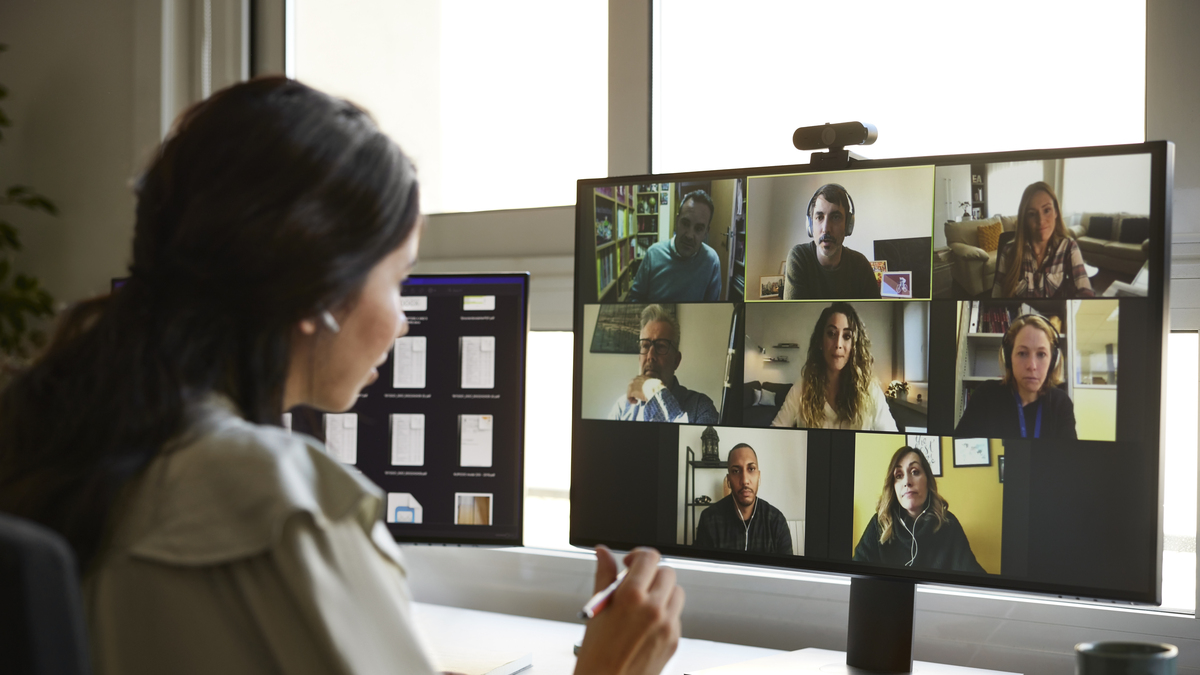Video conferencing came into the business lifestyle during the pandemic and has successfully become its integral part, giving more flexibility to both remote employees and people working from the office. It seems like nothing could be easier — launch an app from any device and talk with interlocutors anywhere in the world. However, will such communication be effective? We have collected video-conference tips that enhance your productivity and efficiency and take the quality of internal and external company communications to a new level.
Videoconferencing Etiquette
Don’t be surprised — virtual and live communication require particular manners and rules of conduct. The effectiveness of video conferencing often depends not only on technical indicators but also on the human factor. You should respect your interlocutor and treat an online meeting just as responsibly as an offline event. These tips will help you improve the quality of virtual meetings and make them more productive.
Test your internet and devices
Starting your meeting with a non-functioning camera, microphone, speakers, or unstable Internet connection would be most unprofessional. Not only will this make you nervous and others angry, but it will also take time from your scheduled meeting. Take care of these aspects beforehand — check your headset, Internet speed, and the app you use to communicate. Ask all participants to do the same if you are the moderator or meeting organizer.
Organize your space
Both remote and in-office employees should be sensitive to the choice of where to hold the call. If you work in an open space, you should move to a meeting room so that you and your interlocutors are not disturbed by background noise. Employees who work remotely should avoid noisy cafes or use a headset with a high level of noise cancellation. When working from home, ensure your family members won’t distract you and your coworkers during the conference call. Before the meeting, ensure all the documents you need are at hand, and everything that comes into the frame is at least clean and will not cause questions to your colleagues.
Handle the software
Nothing breaks the meeting plan as a need to start with downloading and configuring the software, solving the problems, or other technical difficulties. Before the virtual meeting, all participants must get acquainted with the communication software, adjust it to their needs and learn how to use the necessary functions. You must also be sure that your application or the service package you’ve purchased has everything you need for efficient operation.
Get dressed
We can all oversleep, but showing up in front of your coworkers in your pajamas and a pillow mark is not the most professional behavior. If you want to give the impression of a serious person during a video conference, dress accordingly. If you don’t have time to get cleaned up, some video-call services (Whoosh, for example) have touch-up features that can help cover up a lack of sleep or a crumpled face.
Send out invitations in advance
You can get people together when you’re in the office by simply walking up to their desks and asking if they have 10 minutes. But getting the attention of people who work from home will be much more difficult. If you want people to attend your video conference, let them know in advance. Give everyone the time they need to prepare for the video conference.
Be punctual
Time is money, and simple inattention can cause being late. The timer 10-15 minutes before the call will help to avoid awkward situations. You can turn on notifications about the call and send them to all its participants to ensure everyone is on time.
Turn off the mic if you don’t participate in the discussion
Using your keyboard, the ticking of the clock, even your breathing, and other background noises can distract other participants. Turning off your mic when you don’t actively participate in the discussion is better.
Make a detailed plan
An effective video conference should not last too long. Try to keep it dynamic so participants don’t get tired. Allocate a certain amount of time for each question and try not to exceed that limit but do not rush the other participants. The main thing is that there should be no delays on your part.
Always set the agenda
The agenda is the essential stage for having an effective meeting, both in and out of the office. This factor in itself is essential to the success of your video conference. You can send it out to all the members to ensure they are ready to participate in the discussion.
A video conference’s success depends on all the factors we described above. It may seem that some of these points can be skipped and will not affect the efficiency of the work. However, if you want your virtual communication not to become torture but to make your team more productive, it is better to follow each of them.
This article was written by Angela Scott-Briggs from TechBullion and was legally licensed through the Industry Dive Content Marketplace. Please direct all licensing questions to legal@industrydive.com.
![]()



